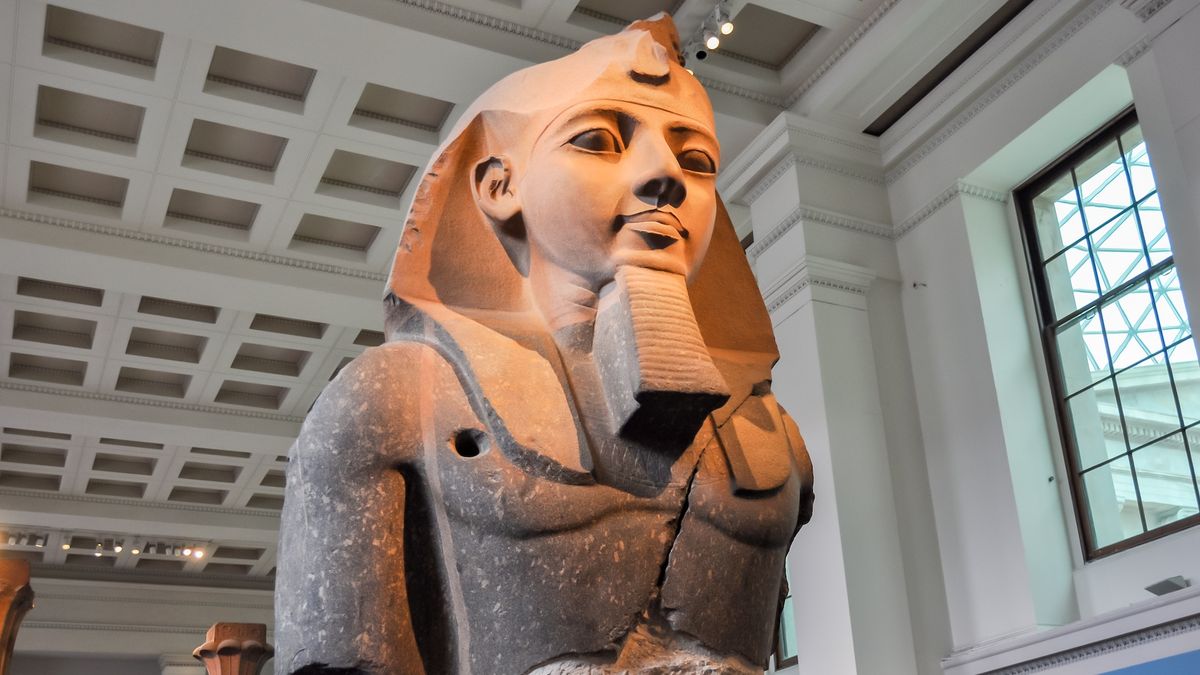Name: The Younger Memnon
What it is: A broken statue depicting the Egyptian pharaoh Ramesses II (also spelled Ramses II)
Where it is from: Ancient Thebes, Egypt
When it was made: About 3,300 years ago
Related: Pazyryk Swan: A 2,400-year-old plush swan from Siberia tied to the ‘creation of the universe’
What it tells us about the past: The “Younger Memnon” is an 8.8-foot-tall (2.7 meter) broken head and torso remnant of a statue from ancient Egypt that now stands in the British Museum in London.
It was made in the early 13th century B.C. and depicts the pharaoh Ramesses II, also called Ramesses the Great, who ruled from 1279 until 1213 B.C. The statue has traces of red, indicating that the granite carving may have been painted in ancient times, according to The British Museum.
Ramesses II was one of the most powerful pharaohs of Egypt’s New Kingdom (circa 1550 to 1070 B.C.), which saw a resurgence in Egyptian traditions after a period of foreign domination.
He may have also been the model for the unnamed pharaoh in the Bible’s Exodus who is said to have enslaved and pursued the Israelites across the Red Sea.
Part of Ramesses II’s great plan was to order the creation of temples, including the expansion of Karnak Temple, monuments and even entire cities — along with many giant statues of himself. He also led military efforts to reestablish Egyptian influence, including the Battle of Kadesh against the Hittites in about 1275. The pharaoh became so famous that ancient Egyptians honored Ramesses II long after his death, including with 2,000 mummified rams’ heads left at a temple 1,000 years after his reign.
The Younger Memnon was one of two statues outside a massive temple that Ramesses dedicated to himself in the ancient necropolis of Thebes, near modern Luxor.
The name “Memnon” resulted from confusion over Greek inscriptions on a similar statue that led 19th-century Egyptologists to think it depicted a mythical Greek king of that name, although it actually depicted the Egyptian pharaoh Amenhotep III; and in early Egyptology, all such statues were called “Memnons.” The term “younger” was used to differentiate it from others because it was smaller.
MORE ASTONISHING ARTIFACTS
The Younger Memnon may be most famous because it is said to have inspired the English poet Percy Bysshe Shelley to write the poem “Ozymandias” — the Greek name for Ramesses II. Egyptology was a burgeoning academic discipline in the 19th century, and a fascination with ancient Egypt — known as Egyptomania — swept through Europe and America.
But it’s now unclear whether Shelley ever saw the actual statue, or if he’d only heard a description. Records indicate the British Museum did not buy the Younger Memnon until 1821 — roughly three years after 1818, when Shelley published the poem and the words “Look on my Works, ye Mighty, and despair!“
